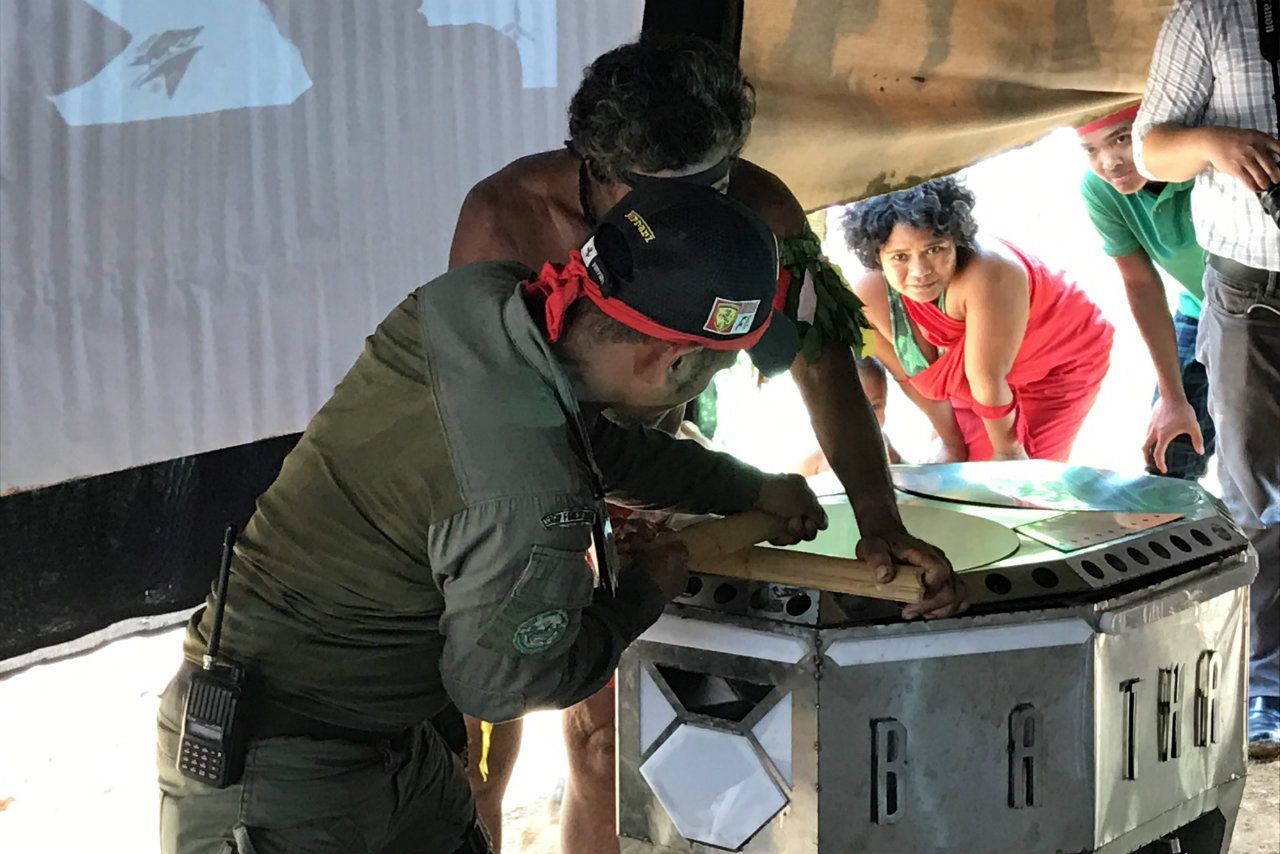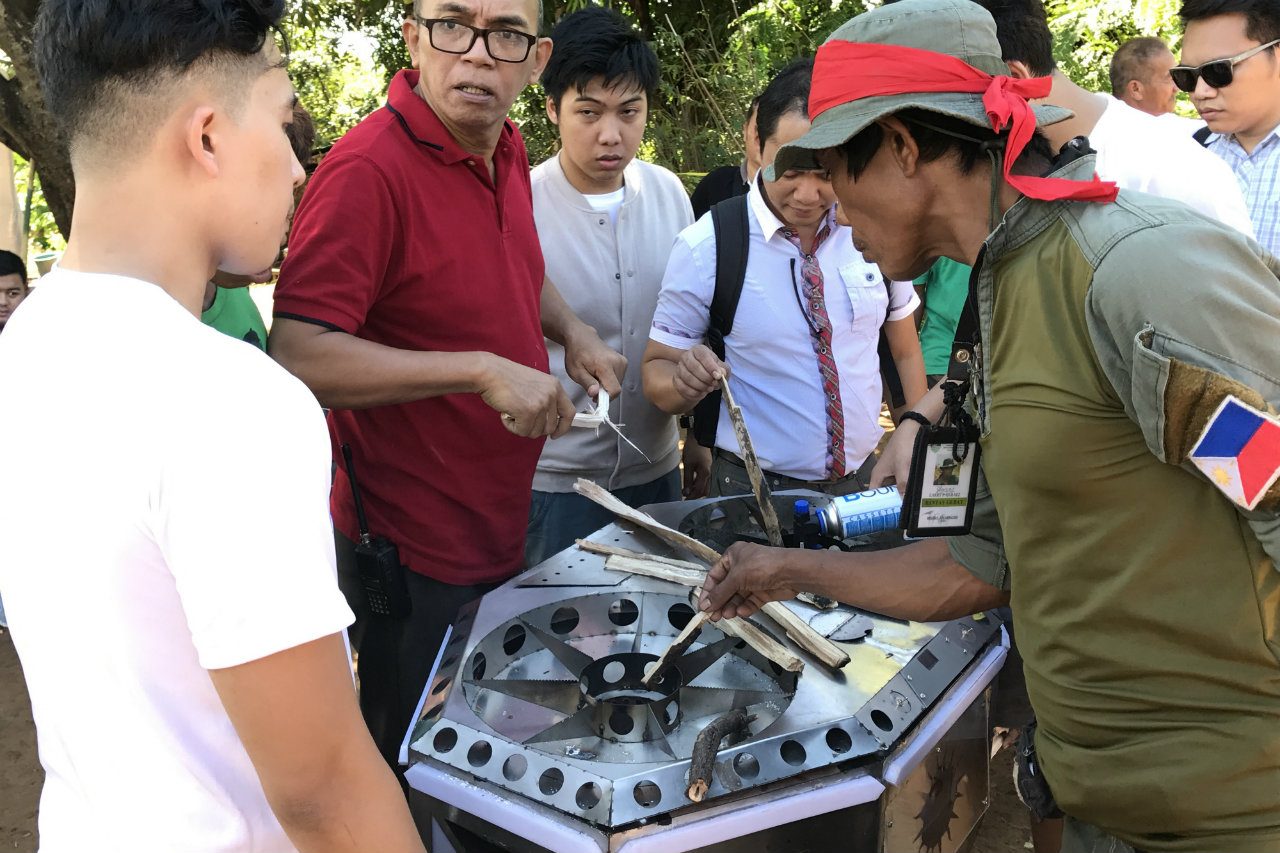SUMMARY
This is AI generated summarization, which may have errors. For context, always refer to the full article.

BULACAN, Philippines – Have you ever imagined yourself living in a place without electricity?
Living in the uplands, the Dumagat tribe in Norzagaray town in Bulacan province is among the 16 million Filipinos who have no access to electricity.
Now, the tribe has a source of electricity and that’s through cooking.
In 2016, Team Carding, a group of engineering students from the Mapua University, won the Sikat Design Challenge, a renewable energy contest focused on solutions for rural areas.
Team Carding developed Bathala, a stove that converts released heat energy to electrical energy while cooking.
All-in-one stove
In Philippine mythology, Bathala is the creator.
Dumagats now identify the word with an innovation that makes their lives easier.
The community now uses the all-in-one stove to cook and boil water. It has also become their main source of electric power.
Back in the days, Dumagats rub two pieces of bamboo to start fire for cooking. When they need to speed up burning, the community of about 200 people rely on cheap kerosene.
Team Carding project lead Jeremy De Leon explained that the stove needs to be loaded with water first. Only then could they can start a fire by using dry wood.
Built with two working stoves, De Leon said that Bathala could generate 80 watts of power. “It can light up 8 bulbs simultaneously,” he said in Filipino.
According to him, the community can create electric power as long as they use the stove for cooking. “As long as nagluluto sila, may kuryente sila. (As long as they are cooking, they will have electricity),” he said.
Electric power
Team Carding used a thermoelectric generator module to facilitate the process. These are solid-state devices that convert thermal energy directly into electrical energy through temperature differences.

The group installed a battery within the stove to prevent energy loss. “There is a battery inside for storage of energy so they can still use it even when they are not cooking,” project member Alsus Adiaton said in a mix of English and Filipino.
According to Adiaton, the stove also has a power inverter inside to supply electricity needed for electronics such as a small fan or speakers used by the community. It also has bulbs which they could turn on when it gets dark.
The group designed Bathala as a communal stove. Adiaton said that the Dumagats use large pots for cooking especially during festivals.
Hope for Dumagats
Bathala has always been seen as a provider.
Brother Martin Francisco, the community organizer, hopes that the stove can create livelihood for the Dumagats.
“The Dumagats have always lived in poverty. Now, with Bathala, it could be used for selling banana cue sticks, or perhaps as a charging station for visitors. The community can earn extra with that,” he said in Filipino.
“We could be a tourist spot now,” he jokingly said.
More importantly, the Dumagats will no longer have to suffer from respiratory sickness due to excessive use of kerosene for energy, he said.
“A lot (of people) from the community inhale smoke and get sick because of that. Some here even have tuburculosis already,” he said.
Rural electrification
Rural electrification has always been a challenge in the country especially in towns located in islands and mountains.
On Tuesday, October 3, Team Carding turned over the stove to the Dumagats. This is one community less from those without access to electric power.
“Marami pa ring nagsisiga dahil kulang sila sa pera. So bakit hindi natin solusyunan?” Adiaton asked.
(A lot of communities still use firewood to cook because they lack money. Why don’t we create solutions?)
In 2015, about 5,000 villages across the Philippines did not have access to electricity. (READ: Green energy to help in ‘last mile’ of PH rural electrification)
The government seeks to light up 90% of homes in the country by the end of 2017, but it is still a far-fetched goal. – Rappler.com
Add a comment
How does this make you feel?
There are no comments yet. Add your comment to start the conversation.